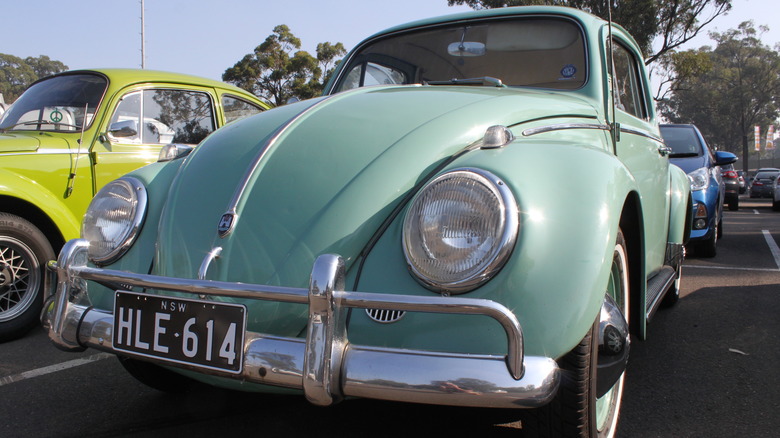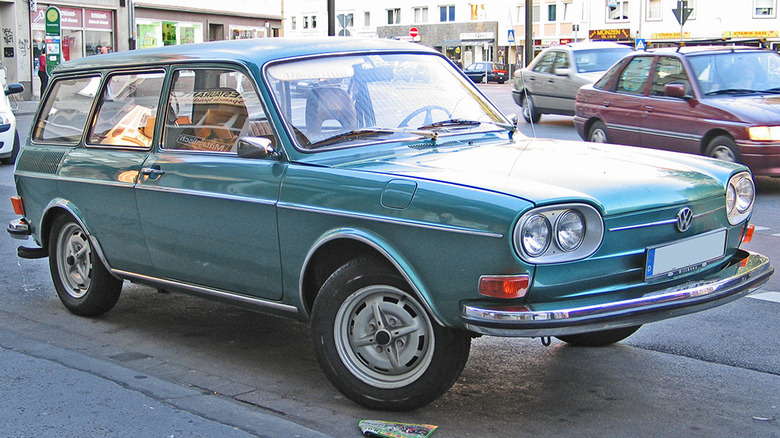Volkswagen Type 1 Vs. Type 4 Engines: What's The Difference?
Most enthusiast discussions about engines sometimes tend to boil down to V6 and V8 engines. They are the engines often associated with power and the flashier automobiles made throughout history. However, they are not the only engines in the game. Take Volkswagen: While it certainly made its fair share of V6 and V8 engines, they have made much more than that over VW's near 90-year existence.
For example, Volkswagen started making an air-cooled, flat-four boxer engine at the very beginning of the company manufacturing engines. This engine would even be used in what is arguably still VW's most recognizable vehicle — the Volkswagen Beetle. Before it had the "Beetle" nomenclature, this car was known as the Type 1, and it would make sense that the engine in that car was called a Type 1 engine.
Then, in 1968, Volkswagen introduced a new version of that flat-four boxer — deciding to bypass the Type 2 and Type 3 names — and called it a Type 4 engine. Naturally, this engine was developed for the Type 4 car. While the car was only manufactured until 1974, the engine itself would be produced through 1983. Meanwhile, the Type 1 engine saw its lifespan go all the way through 2006. What set these two engines apart from one another? Well, it basically comes down to one thing: Size.
[Featured image by Jeremy via Wikimedia Commons | Cropped and scaled | CC BY 2.0]
Size matters
Volkswagen had also produced Type 2 and Type 3 vehicles, but those did not require a different engine from the Type 1/Beetle to operate, but by the time the company got to Type 4, Volkswagen needed to beef things up. The Type 4 engine was still an air-cooled flat-four boxer engine, but it was larger.
Prior to the Type 4, the largest displacement available from a Type 1 engine was 1,300 cc — and at the same time the Type 4 was making it's way into the world, Volkswagen upped the Type 1 to 1,500 cc. Meanwhile, the Type 4 had a base engine displacement of 1,679 cc, and that was increased to 1,795 cc when Volkswagen decided to stop producing the actual Type 4 car.
After the end of the Type 4 cars, the Type 4 engines were an option for Type 2 vehicles — which are Volkswagen's minibuses, and were even available with automatic transmissions. By 1983, emissions standards had changed, and there was a desire to switch over from air-cooled engines to water-cooled ones.
The Type 1 engines could get by, but the larger Type 4 engines ended up on the chopping block. To replace the Type 4, Volkswagen essentially made an engine that had the structure of the Type 1, but was water-cooled instead, ending the two-type era of boxer engines.
[Featured image by Sven Storbeck via Wikimedia Commons | Cropped and scaled | CC BY-SA 3.0]

